Disclosure: This article contains affiliate links. We may earn a commission from purchases at no extra cost to you, which helps our travel content.
The first time I stepped off the train at Brussels Central Station, I was armed with nothing but my court reporter's notepad and a vague plan to catch a performance at Théâtre Royal de Toone. Within hours, I'd gotten lost twice, overpaid for a taxi, and arrived at the puppet theater just as the doors were closing. Five visits later, I navigate Belgium's capital with the confidence of someone who's documented every transportation mishap in meticulous detail—so you don't have to. Whether you're chasing chocolate shops, comic book murals, or cultural performances, mastering Brussels' compact but comprehensive transit system is your ticket to an authentic weekend experience without breaking the bank.
Decoding Brussels' Transit System: The STIB/MIVB Basics
Brussels operates on a surprisingly straightforward transit system once you crack the code. The STIB/MIVB network (yes, everything in Brussels comes in both French and Dutch) consists of metro lines, trams, and buses that can get you virtually anywhere worth going.
During my most recent visit—documenting seasonal puppet theater traditions—I discovered that the most cost-effective option for weekend visitors is the 48-hour pass (€14.00) rather than the single-journey tickets (€2.10 each). If you're staying longer, consider the 72-hour option (€18.00).
What the guidebooks don't tell you: Brussels' transit card is actually called a MOBIB card, and you'll need to purchase the physical card (€5) before loading tickets onto it. However, I've found a perfect workaround. Download the STIB/MIVB app and purchase mobile tickets instead—no plastic card required. Just be sure your phone battery won't die mid-journey; I keep my portable charger in my day pack for this exact reason.

💡 Pro Tips
- Download the STIB/MIVB app before arrival to purchase mobile tickets
- Metro lines 1 and 5 connect most major tourist attractions
- Validate your ticket before boarding—even digital ones—to avoid the €107 fine
The Art of Brussels Zone Hopping
"You don't need to understand the zones," said Mathieu, a local lighting designer I met while attending a show at Théâtre National. "Most tourists never leave Zone 1 anyway." He was right—Brussels' compact center means most attractions fall within the central zone, but some hidden gems require venturing further.
Case in point: My quest to find the workshop of a third-generation puppet maker led me to Uccle in Zone 2. Rather than buying separate tickets, I discovered the Brussels Card with STIB option, which combines unlimited transport with museum access. For solo travelers who plan to visit at least three museums, the savings are substantial.
When traversing zones, particularly in the evening, I've found Brussels' transit system remarkably punctual—a welcome contrast to my hometown experiences. The last metro trains run until midnight on weekdays and until 2 AM on Fridays and Saturdays. For late-night returns after catching performances, the Noctis night bus network (N71-N18) fills the gap, though with less frequency.
For comfortable all-day exploration, invest in proper footwear. My walking shoes have been lifesavers on Brussels' cobblestone streets, especially when I'm rushing between transit connections or exploring neighborhoods on foot.

💡 Pro Tips
- Night buses (Noctis) run only on Friday and Saturday nights
- Always check the final destination displayed on trams and buses, not just the line number
- The Brussels Card with STIB option pays for itself if you visit 3+ museums
Walking Routes: The Theater Lover's Circuit
Brussels reveals itself best on foot, especially between major transit hubs. I've crafted what I call the "Theater Lover's Circuit"—a walking route connecting Brussels' historic performance venues while passing major landmarks.
Start at De Brouckère station and head to Théâtre Royal de la Monnaie, Belgium's premier opera house. From there, it's a short walk to Grand Place, where seasonal outdoor performances often take place. Continue south toward Manneken Pis (yes, the famous urinating boy statue), then east to the Théâtre Royal des Galeries in the stunning Galeries Royales Saint-Hubert.
"The true magic happens in the transitions between spaces," noted Claire, a costume designer I interviewed. "Brussels doesn't separate its cultural venues from everyday life—they're integrated into the city's fabric."
She was right. Walking this 2.5-kilometer route, I've discovered hidden workshops, impromptu street performances, and cafés where theater companies hold informal rehearsals. During winter months, I stay comfortable with my touchscreen gloves that let me check maps and take notes without exposing my hands to Brussels' notorious dampness.
For capturing these moments, I've found a pocket voice recorder invaluable—it's more discreet than pulling out my phone to record conversations with local artists and preserves the ambient sounds that make each visit unique.
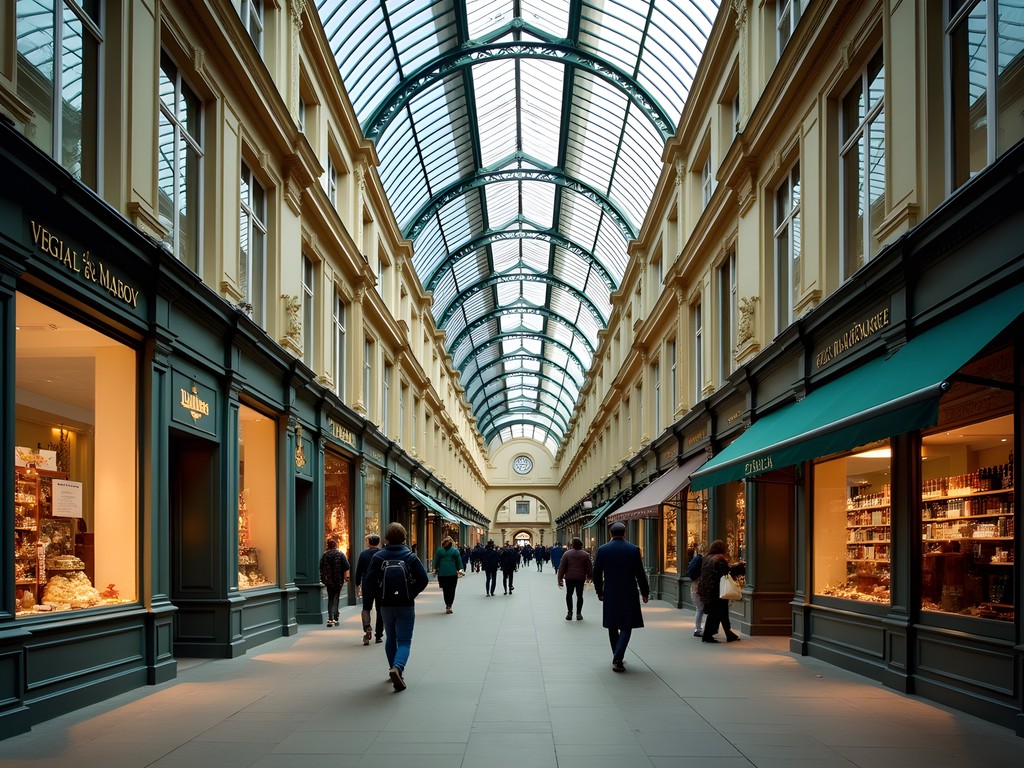
💡 Pro Tips
- The Theater Lover's Circuit takes approximately 2 hours with stops
- Most historic theaters offer free lobby access even without show tickets
- Brussels' central pedestrian zone makes walking between major venues car-free and pleasant
Budget-Friendly Transport Hacks
As someone who travels on a court reporter's salary, I've become adept at stretching my euros in Brussels. My first money-saving discovery was that Brussels Airport offers a 50% discount on train tickets to the city center if you book through the SNCB app rather than at the station kiosks.
"Most tourists don't realize our weekends begin on Friday evening," explained Thomas, a stage manager at a local theater. This insider tip led me to discover that STIB/MIVB's weekend rates apply from 7PM Friday through Sunday, offering unlimited rides for just €6.00 with a Weekend Ticket.
For solo travelers watching their budget, Brussels' Villo! bike-sharing system provides an economical alternative to public transit. A one-day subscription costs just €1.60, with the first 30 minutes of each ride free. I've found this perfect for short hops between attractions, though be warned that Brussels' hills can make for challenging rides in certain areas.
To keep track of expenses while navigating different transport options, I use the travel wallet which has separate compartments for different currencies and tickets—essential when you're constantly switching between transit cards, museum passes, and theater tickets.
Perhaps my best budget hack: Brussels offers free guided walking tours that depart from Grand Place several times daily. While technically free, the guides work for tips (€10-15 is appropriate). I've found these tours provide context that enhances every subsequent solo exploration.

💡 Pro Tips
- Book your airport train ticket through the SNCB app for 50% savings
- Weekend rates for public transport start Friday at 7PM
- Many museums are free on the first Wednesday afternoon of each month
Seasonal Transit Considerations
Brussels' transit experience changes dramatically with the seasons—something I've documented across multiple visits. Summer brings extended daylight hours perfect for walking between attractions, but also tourist crowds that can pack trams heading to popular spots like Atomium.
During my fall visit to catch the opening of theater season, I discovered that September and October offer the perfect balance: comfortable walking weather, fewer tourists, and the return of regular transit schedules after summer modifications.
Winter presents its own charm and challenges. The Christmas markets transform areas around Sainte-Catherine and Grand Place, but also reroute certain bus and tram lines. I learned this lesson the hard way when trying to reach a shadow puppet workshop during December.
"We adjust our performance schedules to align with the last metros," explained Juliette, a theater administrator. "But during winter festivals, always add an extra 15 minutes to any transit estimate."
Brussels' notorious rain can appear in any season. After being caught in several downpours, I now carry a compact umbrella that fits perfectly in my day pack's side pocket. For those unexpected seasonal transitions, I've found a packable rain jacket invaluable—it takes up minimal space but has saved me from Brussels' sudden showers countless times.
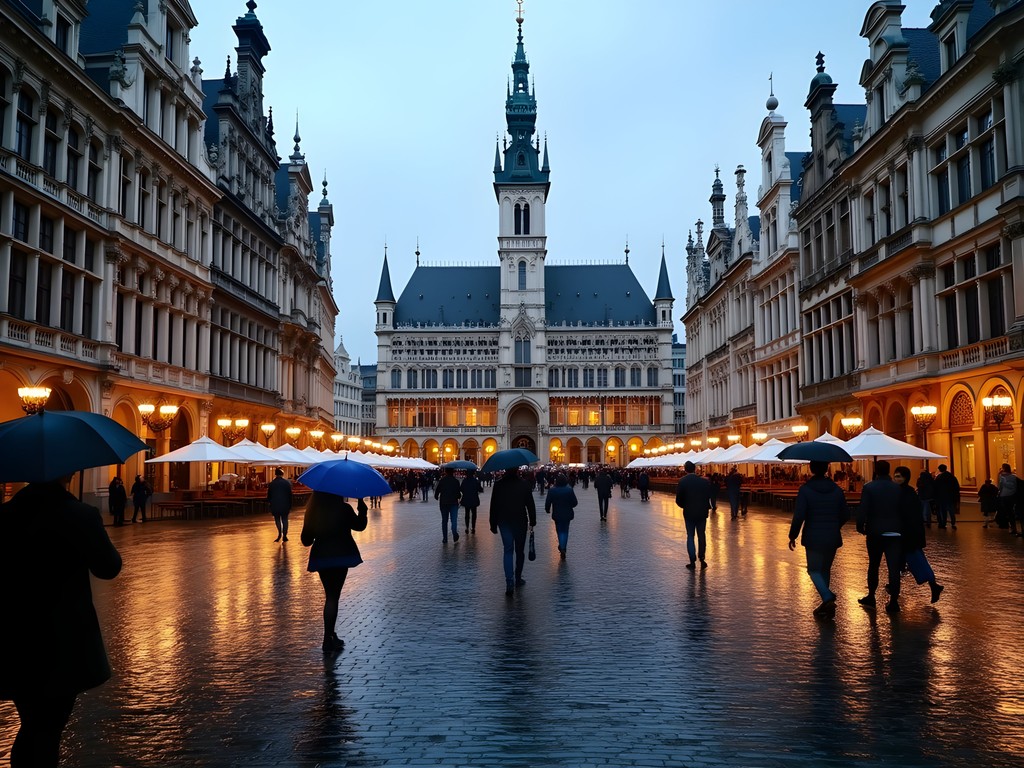
💡 Pro Tips
- Winter holiday markets cause temporary transit route changes—check the STIB app for updates
- Summer brings extended metro hours but reduced frequency
- Spring and fall offer the most reliable transit schedules with fewer disruptions
Final Thoughts
After five visits documenting Brussels' seasonal theater traditions, I've come to appreciate how the city's transit system serves as both backdrop and supporting character in my Belgian adventures. From the efficient metro that delivered me to a basement puppet theater in the Marolles district to the historic tram routes that trace centuries-old pathways, Brussels offers a transportation network that's as rich in character as its cultural offerings.
The real magic of navigating Brussels isn't just reaching your destination efficiently—it's in the journey itself. Those tram rides through narrow medieval streets, conversations with locals at bus stops, and walks through hidden passages have provided some of my most authentic Belgian experiences.
As you plan your own Brussels weekend, remember that the best approach combines pragmatic transit use with purposeful wandering. Download the apps, purchase the right passes, but don't be afraid to hop off at an interesting-looking stop or follow a local's recommendation to an off-map destination. Brussels rewards the curious traveler who understands when to follow the transit map—and when to fold it up and simply explore. Until next season, when I return to document Brussels' summer theater festival, I'll be dreaming of those yellow trams and cobblestone journeys.
✨ Key Takeaways
- The 48-hour pass offers the best value for weekend visitors
- Brussels' compact center means walking is often faster than transit between nearby attractions
- Mobile tickets through the STIB/MIVB app eliminate the need for a physical MOBIB card
- Seasonal events like Christmas markets can affect transit routes
- The Theater Lover's Circuit walking route connects major cultural venues and landmarks
📋 Practical Information
Best Time to Visit
September-October or April-May
Budget Estimate
€100-150 for a weekend including transportation and basic admissions
Recommended Duration
2-3 days
Difficulty Level
Easy

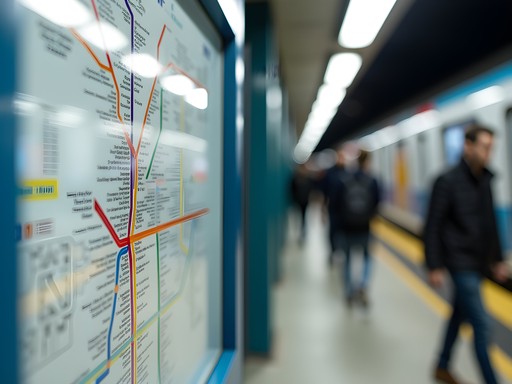

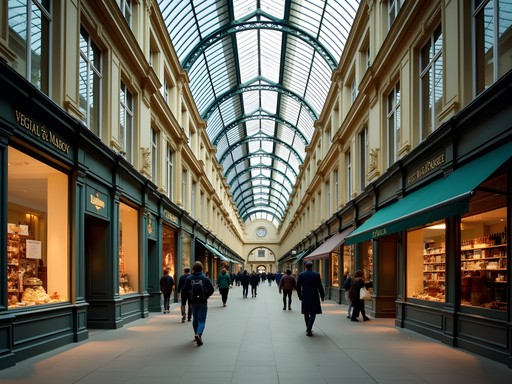
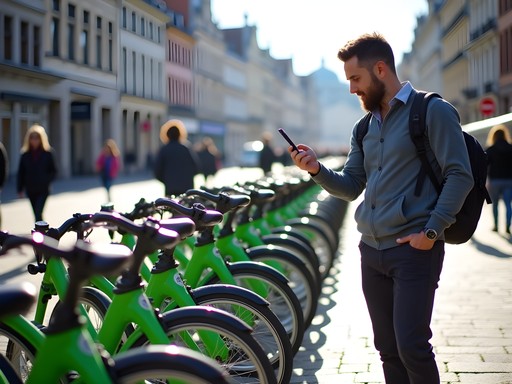
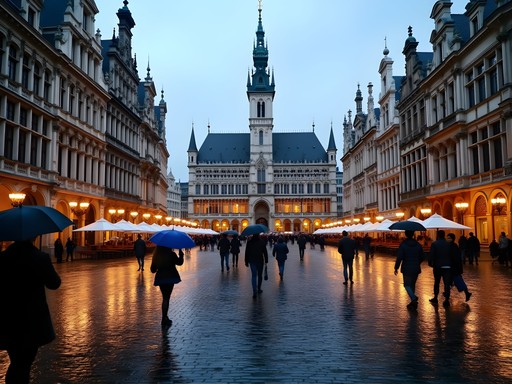


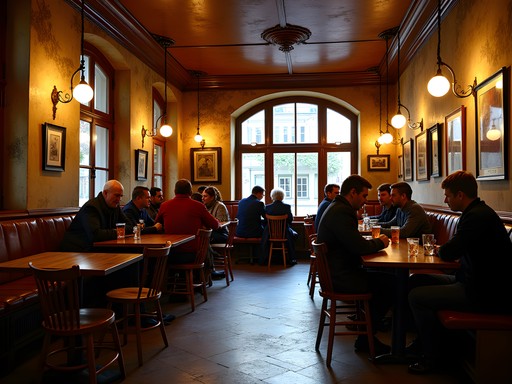
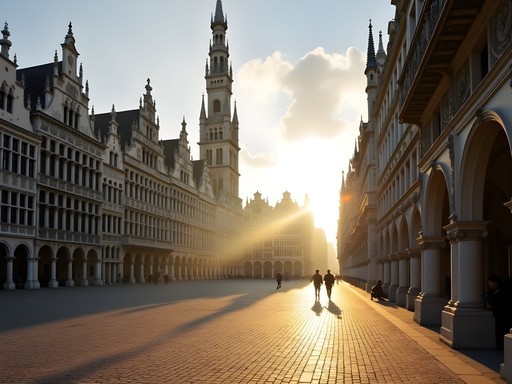






Comments
dreamblogger
Just got back from Brussels and used this guide extensively! The zone hopping tips saved us so much money. We stayed near Flagey and found the tram system super easy once we understood the basics. One thing I'd add - download the STIB/MIVB app before you go! It was a lifesaver when we got turned around near Sablon. Also, we found this awesome little spot called Café Mort Subite right off your theater walking route. Perfect for a Belgian beer after catching a show! I bought a pocket guidebook before going but honestly your blog post was more helpful for the transportation stuff.
Casey Andersson
Mort Subite is such a gem! Did you try their house gueuze?
dreamblogger
Yes! It was perfectly tart. My husband wasn't a fan but I loved it!
dreamvibes
Love the budget hacks! Saved this for my trip next spring.
sunsetguy
Great post! We're staying near Schuman station next month. Is it easy to get to the theater district from there? Also wondering if the 72-hour pass is worth it?
Kenneth Marshall
From Schuman, you can take Metro Line 1 directly to Central Station and you're right at the edge of the theater district! For the 72-hour pass, it depends on how much you'll use transit. If you're doing 3+ trips daily, it's worth it. Otherwise, the 10-journey card might be more economical.
sunsetguy
Thanks for the quick response! We'll probably go with the 10-journey card then since we like walking when weather permits.
Casey Andersson
Kenneth, this is gold! I was in Brussels last winter and completely messed up the zone system my first day. Ended up with an unnecessary 24-hour pass when I could've just used the hop-on tickets. Your Theater Lover's Circuit would have saved me so much wandering too - I stumbled upon Théâtre Royal de Toone by accident after getting lost three times! The little puppet shows there were absolutely charming though. For anyone heading there, I'd also recommend the evening walking route from Grand Place to Saint Catherine around dusk - the lighting is magical for photos and there are some incredible chocolate shops along the way that stay open late.
WeekendWanderer
Love the budget hacks! Those day passes saved us so much.
wavegal
Just booked my trip to Brussels for November! This guide is perfect timing, thanks Kenneth!
Kenneth Marshall
Glad to help! November is a great time to visit - the holiday lights start going up but it's not too crowded yet.
wavegal
That's exactly why I picked it! Any specific theater recommendations for November?
BelgianLocal
As someone who's lived in Brussels for 15 years, I'm impressed by how accurate this guide is! One small addition: if you're staying for the weekend, the Sunday market at Gare du Midi is worth visiting and easily accessible by metro. Just avoid peak hours (10-12) when it gets super crowded. And yes, locals do use the metro to avoid the hills, especially when it's raining! The shortcut through Galeries Royales St-Hubert that Kenneth mentions has saved me from many downpours.
FirstTimeBrussels
Any food recommendations at the Gare du Midi market? Going in November!
BelgianLocal
Try the Moroccan pancakes (msemen) with honey and the fresh stroopwafels! There's a Portuguese stall with amazing pastéis de nata too.
EuroTripper2025
That shot of the sunset from Mont des Arts is gorgeous! Is that really taken with just a phone camera?
Kenneth Marshall
Thanks! Yes, just my phone with a bit of editing. The golden hour light in Brussels is magical, especially in autumn.
SoloBiker
Just booked my trip for November! This couldn't have come at a better time.
TravelWithKids
Great post! We're visiting with our 5 and 7 year olds in October. Are kids free on public transport? And which of your walking routes would be most kid-friendly?
oceanvibes
Not the author but kids under 6 are free! My niece loved the Comic Strip Route - lots of murals of Belgian cartoon characters on buildings throughout the city.
TravelWithKids
Perfect! My son is obsessed with Tintin so that's perfect. Thanks!
Venture X
Premium card with 2X miles, $300 travel credit, Priority Pass